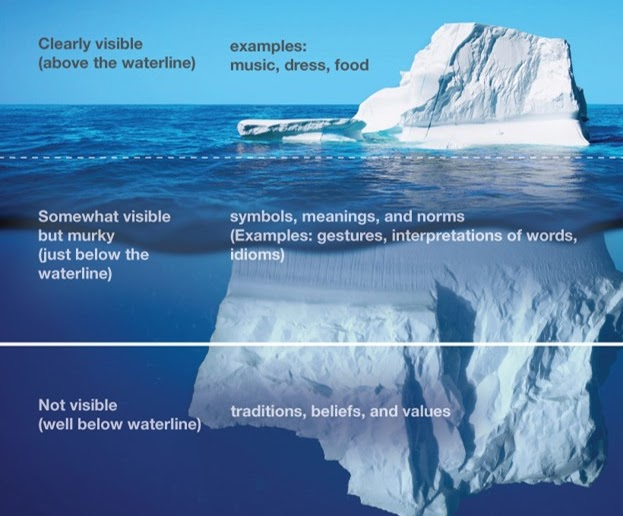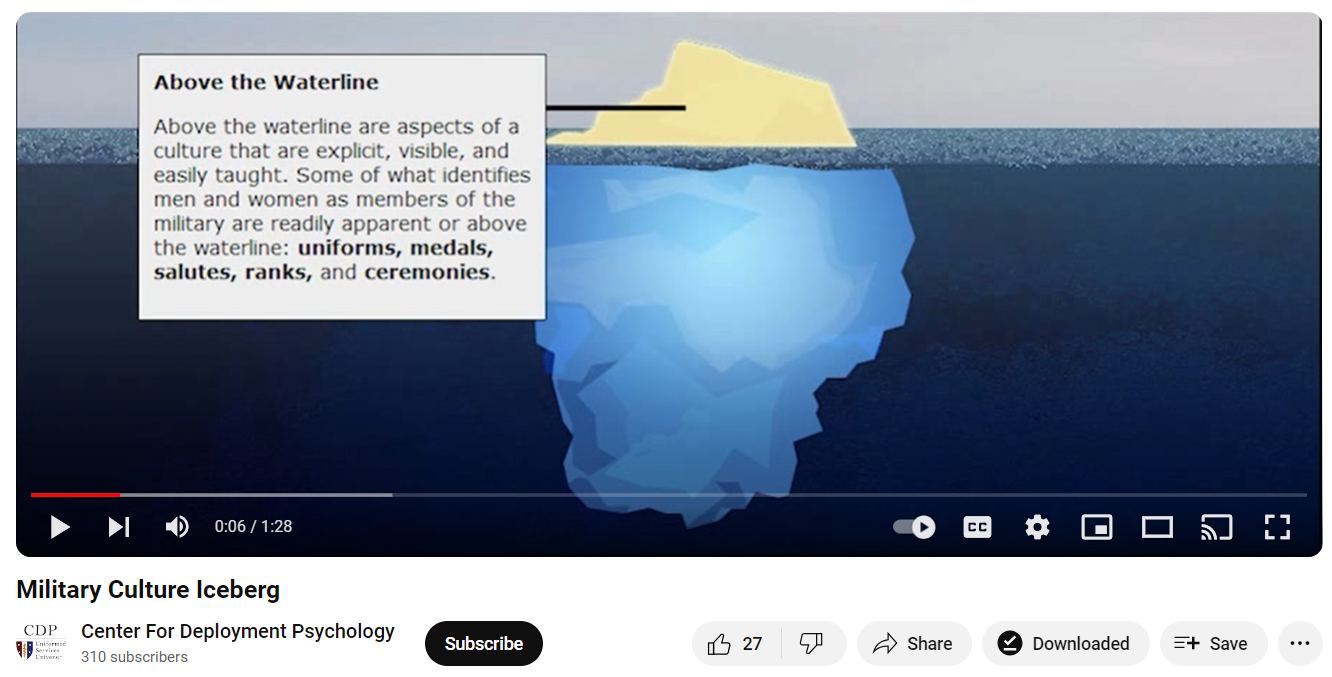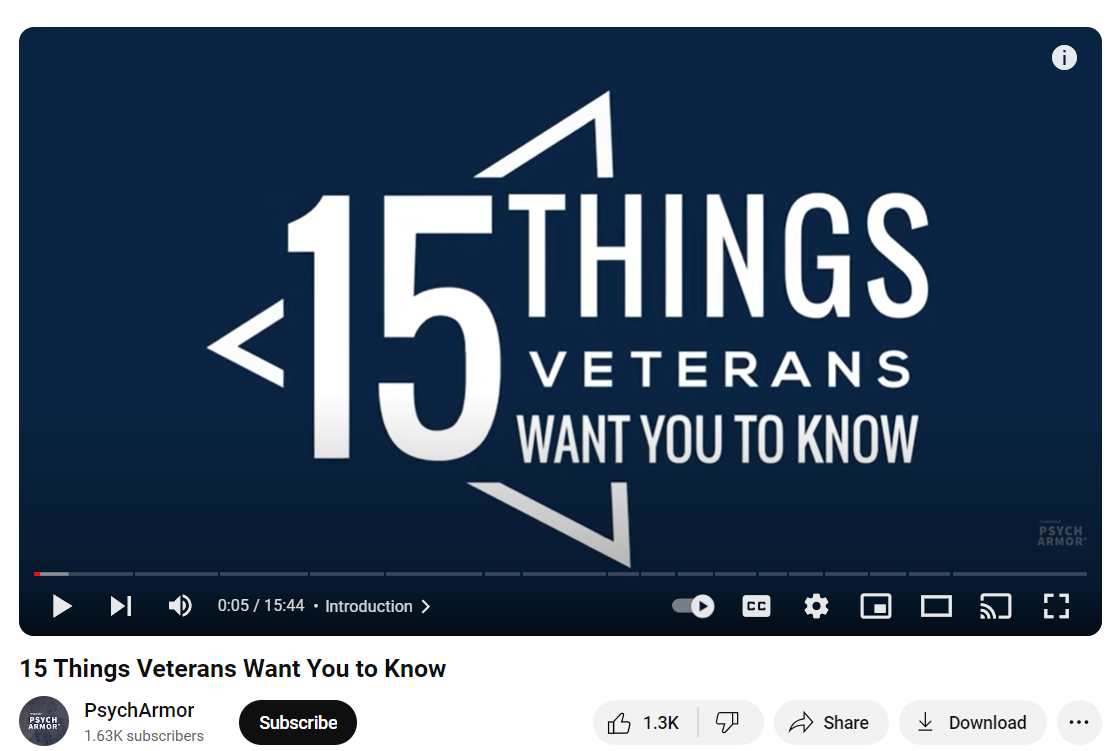Understanding Military Culture
An iceberg is a common analogy used when explaining culture. Like an iceberg, culture has fully visible components to others (above the surface). Language, etiquette, food, and dress are the tangible aspects of culture that are easily identifiable to others but don't tell the whole story of a culture.
Some parts of a culture lie just below the surface and can be exposed with minimal effort or explanation. One example might be differences in words or phrases, such as regions that say soda versus pop, sprinkles instead of jimmies, or first floor versus second floor.
The crux of a culture's essence lies below the surface. These profound aspects of a culture are comprehended after considerable time and effort. Hidden elements, such as child-rearing beliefs, collectivism versus individualism, and female/male societal roles, are the key to truly understanding and appreciating cultural diversity.
Deciphering the Cultural Iceberg.
Think
What visible aspects of military culture can you name?
Can you think of any aspects that are just below the surface?
What about the invisible aspects of military culture?
Individuals within a cultural group are diverse and unique. Sharing cultural values and characteristics does not allow us to predict an individual member's behavior or beliefs, but cultural understanding does give us a broader understanding of cultural differences and provides us an entry point for our interactions. Culture should not be used to stereotype a group or an individual.
Now that we've explored culture watch this short video that includes examples of visible and invisible aspects of military culture. (Click Image Below, you will be taken to another site)
One of the best ways to learn about another's culture is through our interactions. As opportunities to interact with service members and veterans is often limited, please watch the video below to learn about what veterans want you to know about military culture. (Click Image Below, you will be taken to another site)
The military also has subcultures. For example, Marine Corps culture varies from Army culture and Air Force culture. It is not necessary for you to know the specifics of each branch of the military and its subculture. As shared in the video you just watched, if you'd like to learn more about a branch, ask your student and their family about what makes their branch of the military different from the others. They will probably include many jokes about the other branches in their answer (almost a requirement of military culture), as each branch has a deep-seated respect for the other branches while declaring theirs as "the best branch." They will be honored that you are taking the time to learn about their branch and their culture.
For the general public one key take away to remember is that "soldier" is not an overarching term for all branches of the military. See the list below for the appropriate terms for each branch.
Air Force: Airman
Army: Soilder
Navy: Sailor
Marine Corps: Marine
Coast Guard: Sailor
Space Force: Guardians
Additional resources are provided below should you wish to delve deeper into the different branches.
Finally, being a Military Brat is its own subculture. While those outside the military community may see the term "Brat" as derogatory, most military children do not. Brat is a term worn proudly. There are Brat pins, hats, t-shirts, social groups, and museums. As with most identities, it is up to the child whether they like to be called a military brat. You can find more about the term 'Military Brat' here: Brats Without Borders.
Think
Can you name one subculture component that is unique to a branch?
Additional Resources:
A Walk in My Shoes: Military Life Full-Length Documentary (37 minutes) (Click Image Below, you will be taken to another site)














